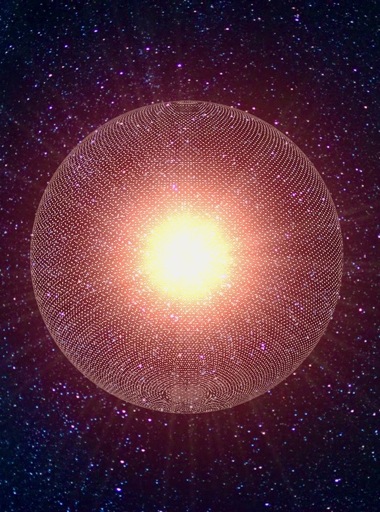A Dyson sphere is a hypothetical megastructure that encompasses a star and captures a large percentage of its power output. The concept is a thought experiment that attempts to imagine how a spacefaring civilization would meet its energy requirements once those requirements exceed what can be generated from the home planet’s resources alone. Because only a tiny fraction of a star’s energy emissions reaches the surface of any orbiting planet, building structures encircling a star would enable a civilization to harvest far more energy.



Edit to add disclaimer: this is shitpost level math here guys, I’m just spitballing.
It would definitely emit thermal radiation. if it was 99% efficient and the size of pluto’s orbit, around a star like the sun, and the energy was used to create matter, I think it would radiate the remaining energy as 0.009 W/m2 with a peak emission wavelength of 150micrometers. The James Webb telescope has infrared capabilities that max out at 28.5 micrometers so def not detectable.
But probably a dyson sphere would be smaller than pluto’s orbit, which would greatly increase the apparent power, and shorten the wavelength. idk it’s all imaginary.
I won’t subject you to my hand writing but I did (power of sun × 0.01)/(surface area of sphere with Pluto’s orbital radius) to get radiation intensity (0.009 W/m2). Then rearranged Stefan-Boltzmann law to solve for temperature (19.8K). Then used Wien’s Displacement Law to calculate the peak wavelength (1.5×10-4 m).
Maybe I’ll run the numbers again with a martian orbit radius, and 50% efficiency.
Okay I did the same calculation but with Martian orbit as dyson sphere size, and 50% efficiency I got a wavelength of 3.4um so nicely in the infrared range of JWST.
I think the sphere would need to be like 99.95% efficient to be undetectable by JWST at Martian orbit radius.